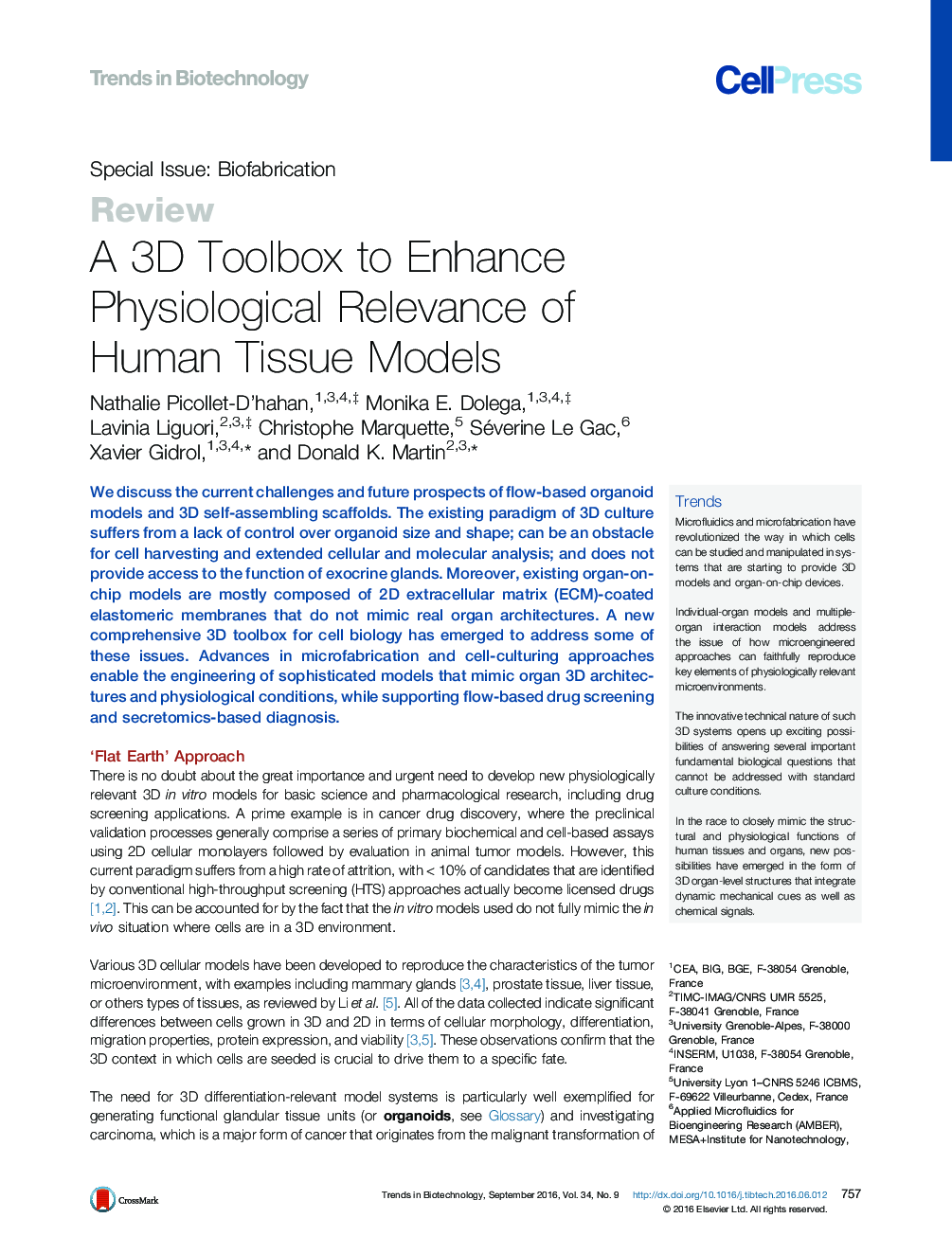| کد مقاله | کد نشریه | سال انتشار | مقاله انگلیسی | نسخه تمام متن |
|---|---|---|---|---|
| 2205504 | 45265 | 2016 | 13 صفحه PDF | دانلود رایگان |

We discuss the current challenges and future prospects of flow-based organoid models and 3D self-assembling scaffolds. The existing paradigm of 3D culture suffers from a lack of control over organoid size and shape; can be an obstacle for cell harvesting and extended cellular and molecular analysis; and does not provide access to the function of exocrine glands. Moreover, existing organ-on-chip models are mostly composed of 2D extracellular matrix (ECM)-coated elastomeric membranes that do not mimic real organ architectures. A new comprehensive 3D toolbox for cell biology has emerged to address some of these issues. Advances in microfabrication and cell-culturing approaches enable the engineering of sophisticated models that mimic organ 3D architectures and physiological conditions, while supporting flow-based drug screening and secretomics-based diagnosis.
TrendsMicrofluidics and microfabrication have revolutionized the way in which cells can be studied and manipulated in systems that are starting to provide 3D models and organ-on-chip devices.Individual-organ models and multiple-organ interaction models address the issue of how microengineered approaches can faithfully reproduce key elements of physiologically relevant microenvironments.The innovative technical nature of such 3D systems opens up exciting possibilities of answering several important fundamental biological questions that cannot be addressed with standard culture conditions.In the race to closely mimic the structural and physiological functions of human tissues and organs, new possibilities have emerged in the form of 3D organ-level structures that integrate dynamic mechanical cues as well as chemical signals.
Journal: - Volume 34, Issue 9, September 2016, Pages 757–769